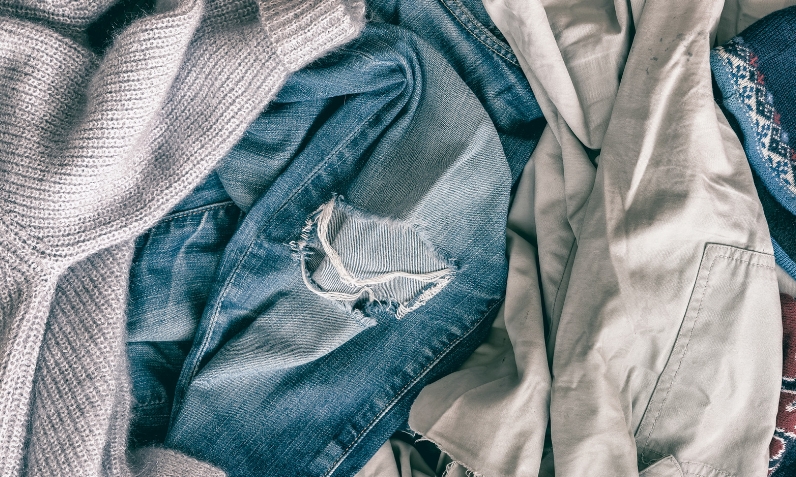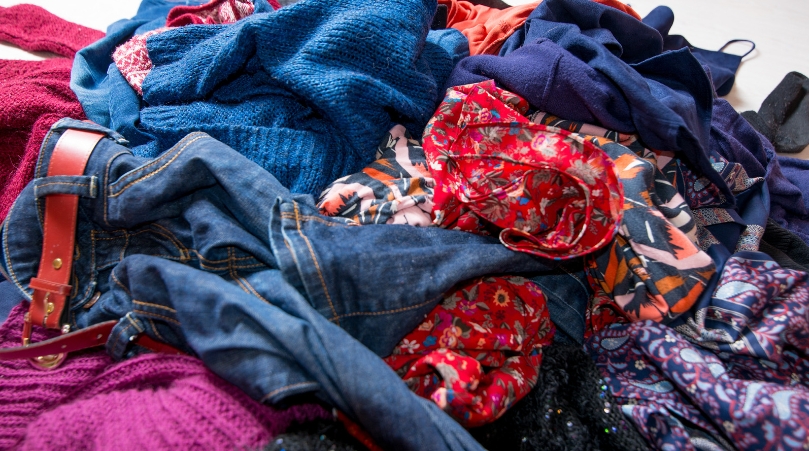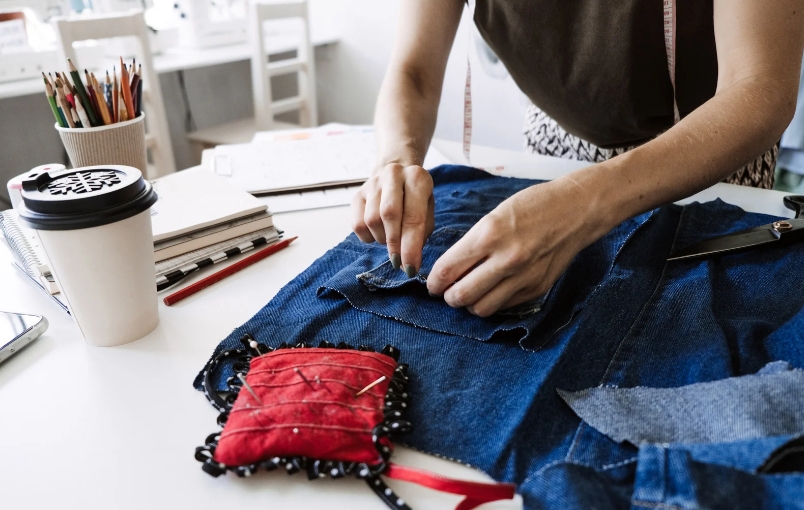Introduction:
In a world fueled by the constant churn of fashion trends, the environmental toll of clothing disposal has reached alarming proportions. However, the solution to staying chic and sustainable doesn’t always entail a shopping spree. DIY fashion hacks present a creative and eco-friendly alternative, breathing new life into old clothes and crafting them into stylish, personalized outfits. This essay delves into the art of DIY fashion, exploring the benefits, techniques, and inspiration behind the transformation of existing garments into fashion-forward ensembles.

The Environmental Imperative:
As the fashion industry grapples with mounting concerns about its ecological footprint, individuals are seeking alternatives to contribute to a more sustainable approach to style. DIY fashion emerges as a practical and enjoyable solution, allowing for the repurposing and upcycling of old garments. By reinventing existing pieces, individuals actively participate in reducing waste, fostering a circular economy, and nurturing a more thoughtful connection with their wardrobes.

Benefits of DIY Fashion:
Sustainability lies at the heart of DIY fashion, offering a pathway to reduce the environmental impact of clothing consumption. By extending the lifespan of garments through creative repurposing, individuals contribute to a circular economy and minimize their carbon footprint. Beyond sustainability, DIY fashion is a cost-effective approach, enabling style enthusiasts to stay on-trend without straining their budgets. Moreover, engaging in DIY projects facilitates a personalized expression of style, allowing individuals to infuse their unique personalities into their creations. As a bonus, the process of transforming old clothes fosters skill development, from basic sewing techniques to advanced upcycling methods.

Popular DIY Fashion Hacks:
- Distressing and Denim Revamp: Give worn-out denim a fresh lease on life by distressing, patching, or adding embellishments. Ripped jeans, embroidered denim jackets, and customized shorts showcase the potential for transforming tired denim into contemporary, personalized pieces.
- T-shirt Transformation: Basic T-shirts can undergo remarkable makeovers through various DIY techniques. Cut-out designs, tie-dye experiments, and knotting strategies breathe new life into plain tees, turning them into stylish and unique statement pieces.
- Sweater Weather Makeover: Old sweaters can find new purpose as cozy accessories or chic garments with a bit of creativity. Whether transformed into off-the-shoulder tops, cropped for a modern silhouette, or embellished for added glamour, sweaters can be repurposed for a trendy and sustainable wardrobe.
- Reviving Old Dresses: Outdated dresses can be revitalized by altering lengths, updating necklines, or experimenting with dye techniques. A simple alteration can turn a forgotten dress into a contemporary piece suitable for current fashion trends.
- Accessory Overhaul: Accessories play a crucial role in elevating an outfit. Scarves become headbands, broken jewelry transforms into statement pieces, and fabric scraps evolve into unique, handcrafted accessories, adding flair to any look.
- Customized Jackets and Blazers: Jackets and blazers can be given a contemporary edge through customization. Patches, studs, embroidery, tie-dye, or fabric paint can breathe new life into old favorites, creating unique and stylish statement pieces.
- Pants and Shorts Refashion: Transform old pants or jeans into new favorites by converting them into shorts or culottes. Experiment with frayed hems, patches, or distressing for an effortlessly cool and updated look.

Inspiration for DIY Fashion:
- Social Media Platforms: Instagram, Pinterest, and YouTube are rich sources of DIY fashion inspiration. Following influencers, bloggers, or content creators who specialize in transforming old clothes provides a constant stream of innovative ideas.
- Thrift Store Finds: Thrift stores offer budget-friendly clothing with potential for transformation. Exploring second-hand shops often yields unique pieces that can be repurposed into stylish creations.
- Online Tutorials and Blogs: Online tutorials and blogs offer step-by-step instructions for various DIY fashion projects. From simple alterations to complex upcycling techniques, these resources cater to fashion enthusiasts of all skill levels.
- Fashion Magazines and Runways: Fashion magazines and runway shows provide insight into current trends, serving as inspiration for transforming old garments into contemporary, on-trend outfits.
- Community Workshops and Classes: Participating in local workshops or online classes focused on DIY fashion and upcycling offers valuable insights and motivation. Learning from experts and collaborating with fellow fashion enthusiasts enriches the DIY experience.

Conclusion:
DIY fashion empowers individuals to reclaim control over their style while actively contributing to a more sustainable and eco-conscious approach to clothing. Beyond the environmental benefits, engaging in DIY fashion projects offers a canvas for creative expression, skill development, and the joy of personalizing one’s wardrobe. By transforming old clothes into trendy outfits, fashion enthusiasts not only refresh their wardrobes but also make a positive impact on the planet. So, armed with scissors, a sewing kit, and creativity, embark on a journey of DIY fashion, turning old garments into renewed expressions of personal style.